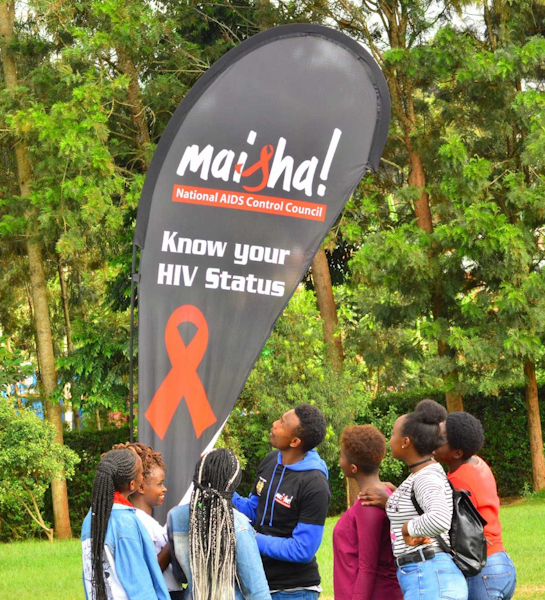HIV/AIDS has become one of the world’s most severe health and development challenges, having claimed over 36 million people since the first case was reported in 1981.
Over the past two decades, a significant global effort has been mounted to address the epidemic. However, the rate of HIV infection globally is becoming a worrying trend.
New HIV infections are rapidly rising across the globe. The latest research by UNAIDS, the Joint United Nations Programme on HIV/AIDS, shows that in 2021, there were 1.5 million new HIV infection cases.
The report indicates that new HIV infections dropped by only 3.6 per cent between 2020 and 2021 – the smallest annual decline ever recorded since 2016.
In the same year, an adolescent or young woman (between the ages of 15-24 years) contracted the virus every two minutes, and 250,000 of both groups were newly infected with the virus—more than 80 per cent of whom were in Sub-Saharan Africa.
In these regions, adolescent girls, young girls, and young women are three times more likely to acquire HIV than their male counterparts.
Among the key things that make these two groups vulnerable to the virus include harmful social norms and practices and social, economic, and gender inequalities.
The 1.5 million new infections were predominantly among key populations and their sexual partners.
People who inject drugs, transgender, sex workers, gay men, people in prisons and other closed settings, and their sexual partners accounted for 70 per cent of new HIV infections worldwide in 2021.
These show that HIV prevention efforts must be concentrated among the marginalized and most vulnerable communities and groups.
Some countries have in the past adopted the scale-up combination HIV prevention programs to reduce the infection rate. Kenya, for instance, used the same approach and reduced HIV incidence by 44 per cent in 2021.
It is one of the few countries nearing successful control of the HIV epidemic and reaching the UNAIDS 95-95-95 goals; 95 per cent of all HIV-positive cases diagnosed, 95 per cent of those diagnosed provide with antiretroviral therapy, and finally, 95 per cent of those treated achieve viral suppression by 2030.
But the approach’s effectiveness has been suppressed by the new HIV infection trend taking a heavy toll on the country’s population, especially among the youth.
According to the World Health Organization, 1.4 million people were living with HIV as of 2021, and at least 180,000 people die from AIDS annually.
Adolescents and young adults aged 15-29 contribute 61 per cent of all new adult HIV infections because they act as carriers.
Early this year, the Ministry of Health’s statistics revealed that an average of 98 new HIV infections were recorded daily among adolescents in 2021. Moreover, children aged 0-4 accounted for over 78,000 of the infected population.
The rapid surge in HIV infection cases in Kenya has been primarily attributed to three significant factors; Gender, sexual violence, and teenage pregnancies.
In societies like Kenya, where unequal gender norms are still deeply entrenched, men are more likely to perpetrate sexual violence, pay for sex, and are less likely to use condoms when having sex with women and adolescents—as a result, increasing the chances of HIV infections.
Adolescent pregnancy is generally not always a result of a deliberate choice, but it remains clear evidence of intentional and continuous unprotected sex among teenagers.
As Kenya and other countries across Sub-Saharan Africa make strides in ending AIDS in adolescent girls and young women as a public threat by 2030, the region still faces a ticking time bomb of women of childbearing age getting infected with HIV.
Response
Through its ministry of health, Kenya’s government has been relentlessly trying to ensure a sufficient supply of Antiretroviral drugs (ARVs).
Kenya is part of the 28 countries expected to formulate and implement the 2025 Prevention Roadmap.
The 28 countries which account for three-quarters of all new HIV infections worldwide are part of the Global HIV prevention Coalition.
The countries have committed to a new target of reducing HIV infections to 370,000 by 2025. A target is achievable if efforts are made to reach people being left behind.
The Road Map has a 10-point plan and country-specific milestones to get the countries on track.
The new HIV Prevention targets include prioritizing comprehensive packages of HIV prevention services and ensuring they are available and used by 95 per cent of people at risk of HIV infection.
Recommendations
- To register positive results, leaders should implement policies that end societal inequalities.
- To ensure the inequality gap is closed, leaders need to;
- Support community-led and community-based infrastructure
- Ensure equitable access to medicines, vaccines, and health technologies
- Put human rights at the centre of pandemic responses
- Support people-centred data systems that highlight inequalities
Addressing Inequities in Breast Cancer Treatment in SSA: Dr Miriam Mutebi




